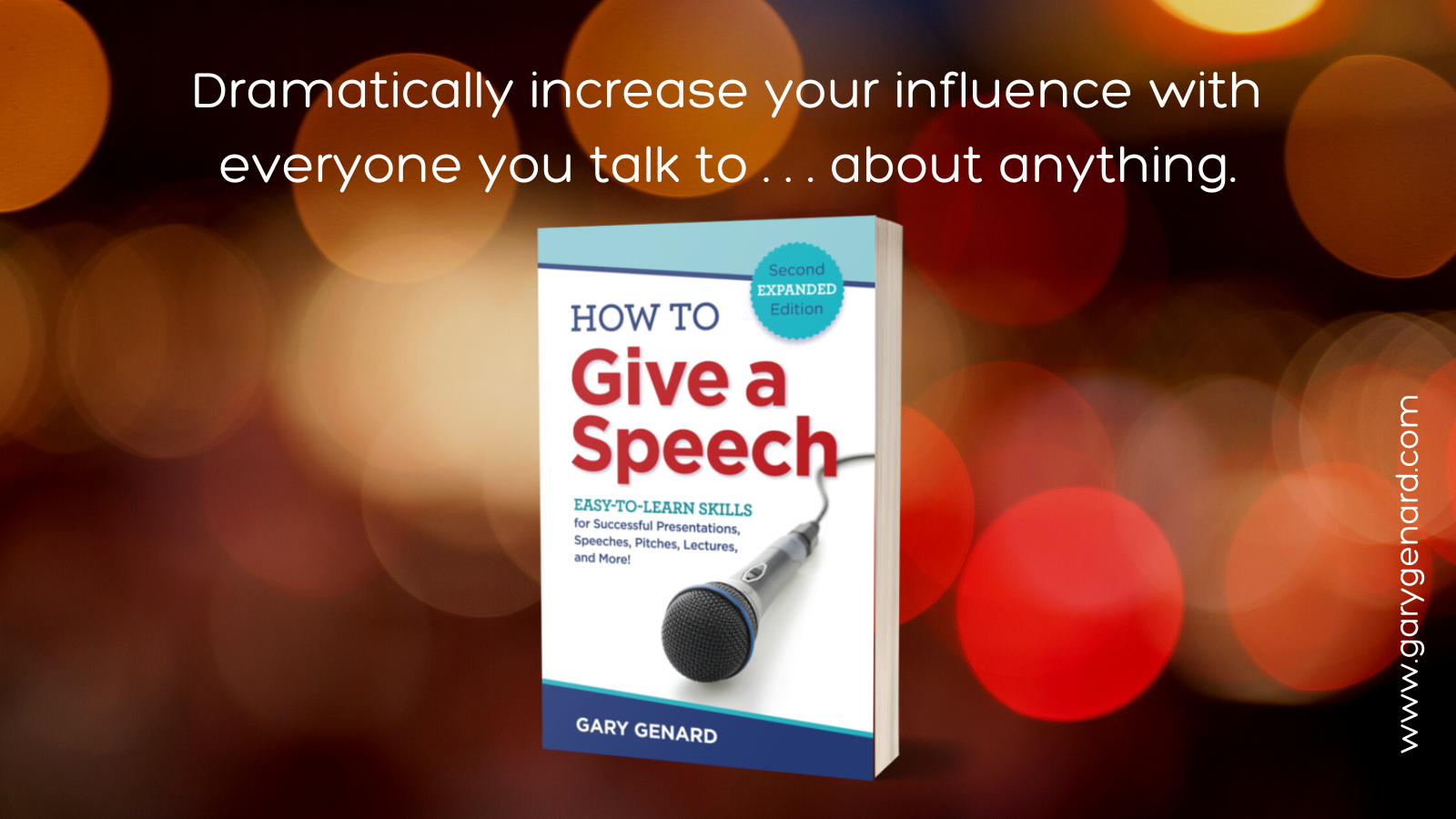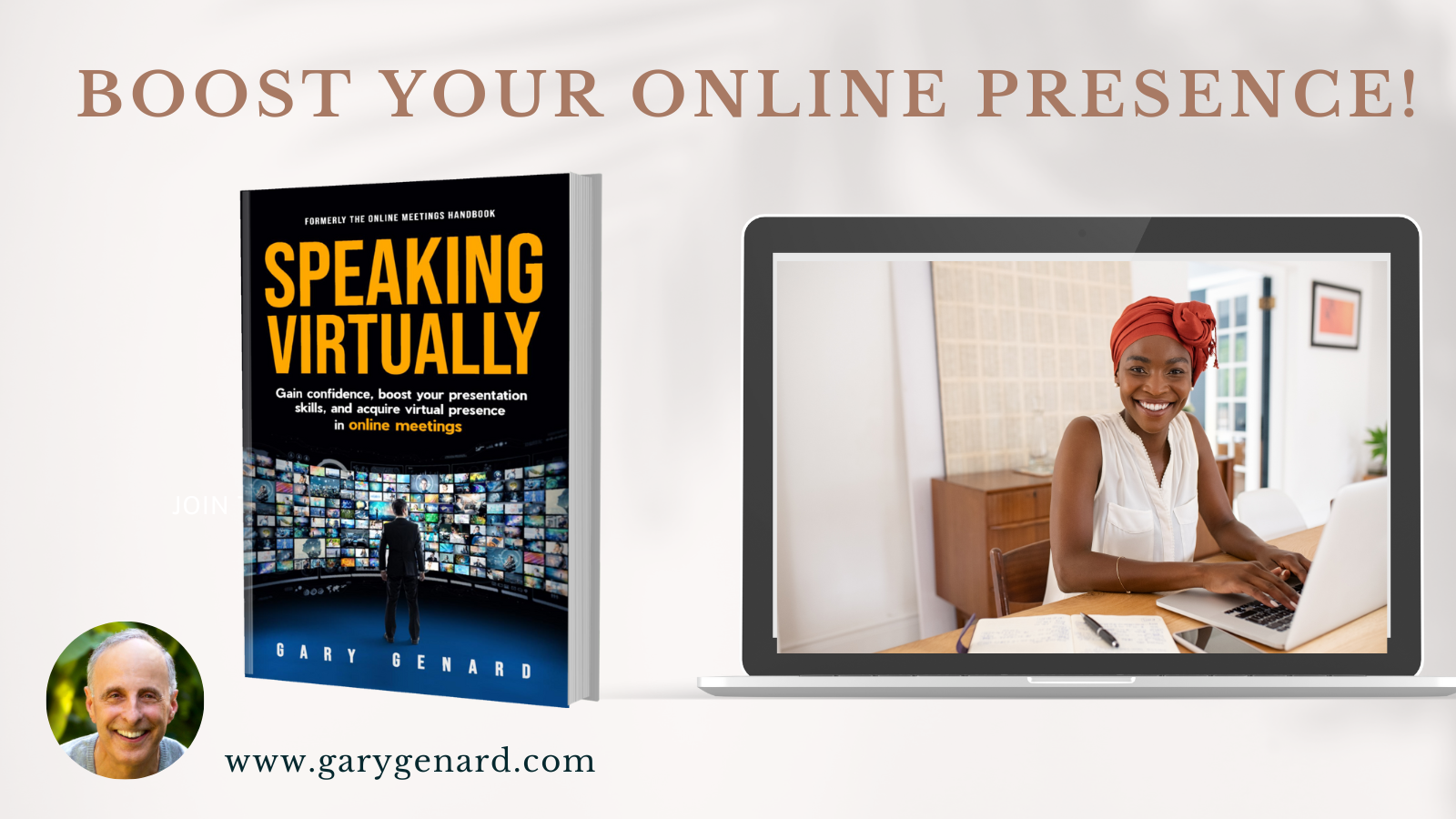Feel shaky at the start of a presentation? Take too long to get into the groove? Here are three great ways to start a speech confidently and effectively.
Among the public speaking prayers making their way heavenward every day is the following. You might have to wait a minute for yours to join the queue, because this is a popular one:
Let me get comfortable and in my groove right away. Get me past those opening jitters!
Congrats! There's been a response, and it's waiting for you via the three tips below.
Here's another great tip for your opening: Tip #16: "How to Grab Your Audience." You'll find it in my book, How to Give a Speech. Click on that link or on the image below!
1. Make It About Them, Not You
The big bugaboo concerning public speaking jitters is entirely understandable. But it's destructive just the same. It's our all-too-human response of, "I want to do well."
Fair enough. But what makes you think this pitch, speech, or presentation is about you? By the definition of public speaking, it's about the audience and their needs, not yours! (You'll find more of my "tough love" messages in Chapter 9, "Reducing Nervousness While You're Speaking" in my book Fearless Speaking.)
Just how nervous about public speaking are you? Take the Free State Fright Quiz. Are your speech jitters low, moderate, significant, or high? Go on . . . find out your score!
The change of viewpoint from, "I want to do well," to "This is all about the benefit to listeners," will put you in the frame of mind of focusing on your audience from the very start. Simply put, the more you make the audience the center of your focus, the more everything you say and do gets you into THAT groove. And you know that once you get into a groove, it's easy to stay there, rolling along. Think about that: if you're all about reaching listeners at the start of your speech, there's no bandwidth left to insert that always disruptive question, "How am I doing?"
Tough love, continued: You don't matter, the audience does. Surprising result: your presentation's effectiveness, i.e., achieving your objective, just lifted off successfully.
This approach applies to virtual meetings, too—though your eye contact needs to change. Boost your online presence with my book, Speaking Virtually. Click below for more!
2. Ask Yourself: "How Do I Earn Their Trust?"
Once your head (and heart) are in the right place, you can really start moving in that groove. I mean in terms of performance—the demonstrable part of an effective speech. "Earning trust" certainly sounds emotional, doesn't it? That kind of response depends upon you and your connection with listeners, almost never on content alone.
Persuading and inspiring people always starts—and stays that way—through honesty and authenticity. If your audience senses that you're honest and concerned with their benefit not your own, they will trust you. Once that happens, the doors to influence open in their minds.
Learn more about getting on your audience's' wavelength. Download my Free Guide, 20 Ways to Connect with An Audience for Lasting Influence. Make it happen!
To get back to starting a speech confidently and effectively: if you're intent on getting through to listeners so they trust you, you're on exactly the right road to both those outcomes. How? If you're being honest about helping others rather than yourself, then you're authentic, and nothing can dislodge you from that place in your own mind. And working every moment to show your audience how your content is about them is a sure path to effective speaking.
3. Invest Yourself In What You're Saying
Still too concerned with how this is going over with listeners? That's probably because you're not focused enough on getting the message across. And this isn't the same as, "Conveying the message" at all. The process of getting through to audiences concerning something that matters to both you and them is hard work. It takes awareness of not only what you're saying (the easy part), but whether listeners are getting it and responding favorably.
Want more on being an effective speaker? Download my Free resource, "How to Be a Clear, Concise, and Compelling Speaker." Put clarity and conciseness on the menu!
That means presenting information in ways that resonate with listeners, while letting them know how what you're saying will benefit them. You're investing yourself not only in the content, but in the living moment of sharing that with people and observing their responses. It isn't touch and feely, either. I'm talking about watching listeners' nonverbal responses: actual physical reactions, along with what they say in terms of questions and challenges. You can never anticipate all of this beforehand (sometimes, not any of it!). It takes moment-by-moment investment in this interaction. And solid investments mean big payoffs!
Always mind that gap that you see in the photo at the top of this article—the gap between how you want to connect with listeners, and why it's not happening yet. Yes, it always looms largest at the start of a presentation. But you're just the person who can fill it in.
In fact, nobody in the world can do that at the moment but you. So, go ahead. Get in the audience's groove.
You should follow me on Twitter here.

Gary Genard is an actor, author, and expert in public speaking and overcoming speaking fear. His company, The Genard Method offers live 1:1 Zoom executive coaching and corporate group training worldwide. In 2022 for the ninth consecutive year, Gary has been ranked by Global Gurus as One of the World’s Top 30 Communication Professionals. He is the author of the Amazon Best-Seller How to Give a Speech. His second book, Fearless Speaking, was named in 2019 as "One of the 100 Best Confidence Books of All Time." His handbook for presenting in videoconferences, Speaking Virtually offers strategies and tools for developing virtual presence in online meetings. His latest book is Speak for Leadership: An Executive Speech Coach's Secrets for Developing Leadership Presence. Contact Gary here.
Main photo credit: flutie8211 on pixabay.





